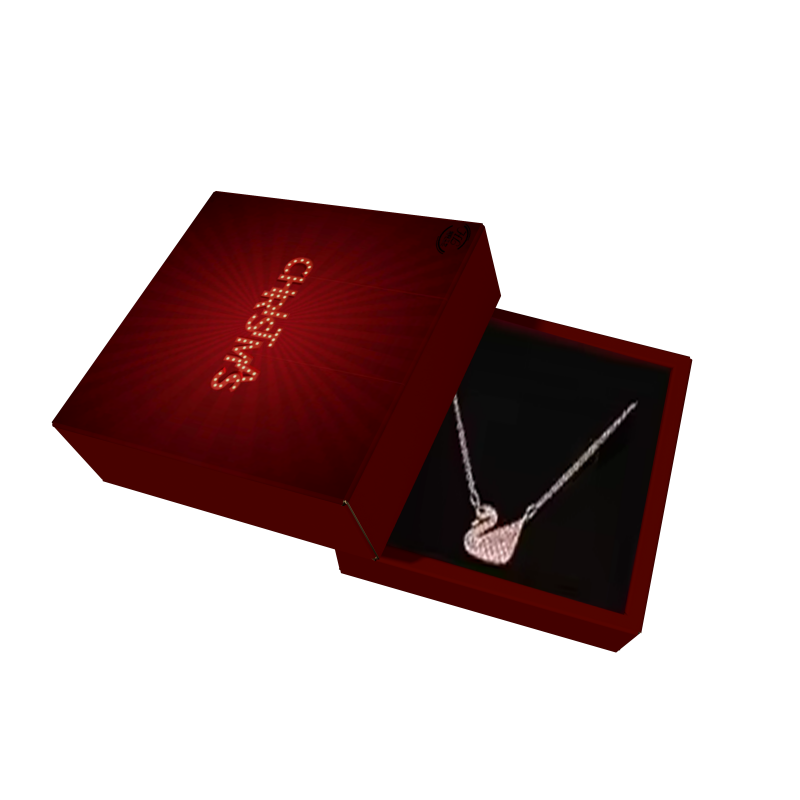친환경 포장 박스의 핵심 구성 요소
재생 가능한 소재 기반
친환경 포장은 재생 가능한 소재에 크게 의존하며, 이는 지속 가능성 목표를 실현 가능하게 만드는 데 중요한 역할을 합니다. 이러한 소재의 독특한 점은 자연 자체의 재생 사이클에서 유래하는 원자재를 사용한다는 것입니다. 대나무, 삼포 또는 일반적인 기존 소재보다 훨씬 빠르게 다시 자라는 다양한 식물성 섬유를 예로 들 수 있습니다. 기업이 포장재로 이러한 재생 가능한 옵션으로 전환할 경우 자원 사용량을 줄이는 동시에 귀찮은 탄소 배출량도 감소시킬 수 있습니다. 예를 들어, 대나무는 재배 과정에서 훨씬 적은 양의 물을 필요로 하며 일반 목재 자원보다 더 많은 이산화탄소를 흡수합니다. 그래서 많은 친환경 기업들이 대나무를 선호하는 이유가 됩니다. 최근 산림관리협의회(Forest Stewardship Council)가 발표한 연구에 따르면 대나무와 같은 재생 가능한 자원으로 전환하면 제품 전 생애 주기에 걸쳐 환경 발자국을 획기적으로 줄일 수 있다고 합니다. 왜 이 일을 훨씬 전에 시작하지 않았을까 하는 생각이 들 정도입니다.
최근 몇 년간 포장 산업은 지속 가능성 쪽으로 상당한 변화를 겪고 있습니다. 소비자와 기업들이 환경 문제에 대해 점점 더 인식하게 되면서 친환경 포장 상자 급증했습니다. 이러한 박스는 환경 영향을 줄일 뿐만 아니라 브랜드 책임성과 고객 충성도를 높이는 데도 기여합니다.
포장 박스를 친환경적으로 만드는 재료에는 어떤 것들이 있는지 이해하는 것은 제조업체, 소매업체, 소비자 모두에게 중요합니다. 이 기사에서는 주요 재료와 그 이점에 대해 살펴보며, 친환경 포장 솔루션을 선택하는 데 도움이 되는 정보를 제공합니다.
재활용 골판지 â 일반적이면서도 비용 효율적인 선택
공급원 및 구성
재생 골판지는 친환경 포장 박스에 가장 널리 사용되는 재료 중 하나입니다. 이 재료는 소비자와 산업 현장에서 발생한 폐기물을 재활용하여 제조되며, 새로운 섬유 사용을 줄이고 매립지 부담을 낮추는 데 기여합니다.
제조사들은 종종 재생 섬유에 최소한의 새 섬유를 혼합하여 강도와 내구성을 유지하면서 지속 가능성과 기능성 사이의 균형을 맞추고 있습니다.
이점 및 응용 프로그램
재생 골판지를 사용하면 자연 자원을 절약하고 종이 생산과 관련된 온실가스 배출을 줄이는 데 도움이 됩니다. 다양한 포장 수요, 소매용 상자부터 운송용 골판지 상자까지 폭넓게 적용 가능합니다.
재생 골판지 포장 상자는 친환경 잉크로 인쇄 및 마감 처리가 가능하여 외관상의 매력뿐 아니라 환경적 가치도 높일 수 있습니다.
골판지 - 내구성과 생분해성 모두 갖춘 소재
구조와 강도
골판지는 두 개의 라이너 사이에 주름층이 끼워져 있는 구조로, 뛰어난 강도와 충격 흡수 성능을 제공합니다. 이러한 구조 덕분에 운송 중 파손되기 쉬운 제품을 보호하는 데 이상적입니다.
많은 골판지 포장 상자 는 재활용 재료로 만들어졌으며 완전히 생분해되어 자연적으로 분해되며 생태계를 해치지 않습니다.
환경적 이점
골판지는 재활용이 가능하다는 점이 큰 장점입니다. 분해되기 전까지 여러 번 재사용할 수 있으며, 플라스틱 대체재에 비해 제조에 필요한 에너지가 적습니다.
튼튼하고 친환경적인 포장을 원하는 기업들은 보호성과 지속 가능성의 균형을 고려해 골판지 포장을 자주 선택합니다.

재생 가능한 섬유 - 대나무와 사탕수수
대나무 섬유 포장 박스
대나무는 빠르게 자라나는 재생 가능한 자원으로, 지속 가능한 포장 소재로서 인기를 얻고 있습니다. 대나무 섬유 포장 박스는 강도가 높고 가벼우며 생분해성이 있어 종이 제품에 대한 자연 친화적 대안을 제공합니다.
대나무 재배는 물 사용량이 적고 농약이 전혀 필요하지 않아 환경적으로 책임감 있는 선택입니다.
사탕수수 백색 찌꺼기 포장
사탕수수 찌꺼기(사탕수수 주스를 짜낸 후 남는 섬유질 잔여물)는 포장 박스에 사용되는 또 하나의 재생 가능한 자원입니다. 찌꺼기 기반의 박스는 퇴비화가 가능하며 견고한 보호 기능을 제공하며, 음식 포장 및 포장용기로 자주 사용됩니다.
대나무와 사탕수수 섬유 포장 박스 모두 생분해성과 퇴비화 가능성이 뛰어나며, 순환 경제 원칙을 지원합니다.
대두 기반 잉크 - 안전하고 친환경적인 인쇄 방식
기존 잉크 대비 장점
인쇄는 포장의 미관 및 정보 표시에서 중요한 역할을 합니다. 대두 기반 잉크는 재생 가능한 자원에서 유래하며 석유 기반 잉크보다 휘발성 유기 화합물(VOCs)을 적게 함유하고 있습니다.
이러한 잉크는 선명한 색상을 구현하며 빠르게 마르고, 재활용 과정에서 제거하기 쉬워 환경 영향을 최소화합니다.
지속 가능한 포장 목표 지원
친환경 포장 상자에 대두 기반 잉크를 사용함으로써 전반적인 지속 가능성 수준을 높일 수 있습니다. 이는 친환경 인증 기준과도 부합하며, 환경을 중시하는 소비자들에게 어필할 수 있습니다.
결론 - 친환경 포장 목표를 지원하는 소재
친환경 포장 상자는 생태 발자국을 줄이면서도 성능을 유지하도록 설계된 소재로 제작됩니다. 재활용 골판지와 골판지 카톤은 경제적이고 내구성 있는 옵션을 제공하며, 대나무와 사탕수수 같은 재생 섬유는 혁신적인 지속 가능 대안을 제시합니다.
대두 기반 잉크를 사용하면 포장의 친환경성을 더욱 높일 수 있으며 이는 현대 지속 가능성 기준에 부합합니다. 적절한 소재를 선택함으로써 기업은 소비자 수요와 규제 요구사항, 기업 책임 목표를 동시에 충족할 수 있습니다.
이러한 소재에 대해 이해함으로써 제조사와 브랜드는 제품과 지구를 보호하는 포장 박스를 자신 있게 선택할 수 있습니다.
자주 묻는 질문
재생 골판지 박스는 새 골판지 박스만큼 튼튼한가요?
재생 골판지는 대부분의 포장 요구사항에 충분히 견디며 특히 새 섬유와 혼합된 경우 더욱 강도가 높습니다.
플루트 골판지 상자는 여러 번 재활용할 수 있나요?
네, 플루트 골판지는 일반적으로 섬유질의 품질이 저하되기 전에 여러 번 재활용할 수 있습니다.
대나무를 지속 가능한 포장 소재로 사용하는 이유는 무엇인가요?
대나무는 빠르게 자라며 물이 적게 필요하고 농약도 필요하지 않기 때문에 환경친화적입니다.
대두 기반 잉크는 식품 포장에 안전한가요?
대두 기반 잉크는 적절한 코팅제와 함께 사용할 경우 대부분의 식품 포장 용도에 무독성이고 안전합니다.

